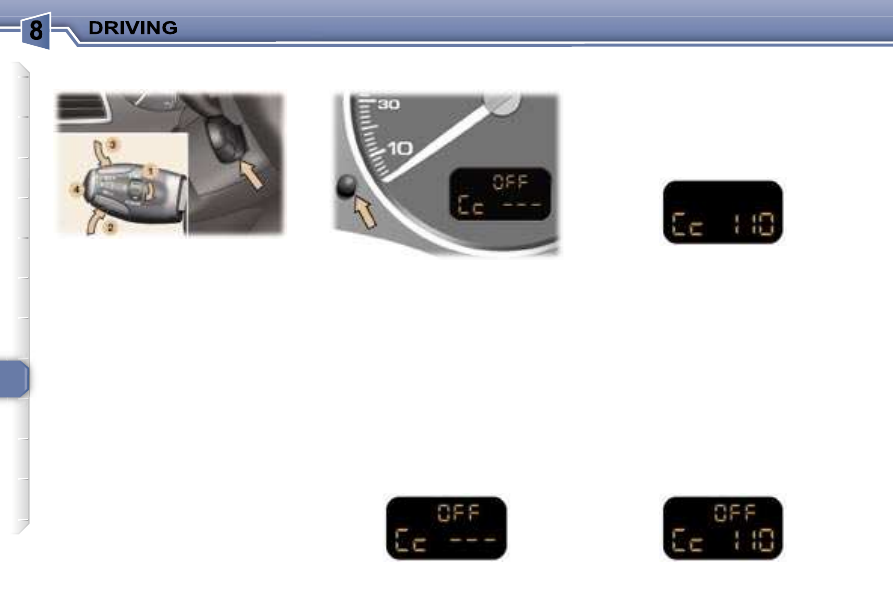Peugeot 307 Break Dag (2007 year). Manual - part 8

100
This cruise control, of the new gen-
eration, is linked with the speed lim-
iter. It has a display on the instrument
panel to indicate the memorised ref-
erence speed.
It enables the vehicle to maintain a
steady speed programmed by the
driver.
In order for it to be memorised or ac-
tivated, the vehicle speed must be
greater than 25 mph (40 km/h) with
at least fourth gear engaged for vehi-
cles fitted with a manual gearbox.
On vehicles fitted with an automatic
gearbox, the lever must be in posi-
tion
D, or in at least second gear in
sequential mode.
When the cruise control function is
activated, pressing this button ena-
bles you to display the distance
recorders.
After a few seconds or when this
button is pressed again, the display
returns to the cruise control function.
First activation/memorising a
reference speed
As soon as you reach the chosen
speed, press button
2 or 3. This mem-
orises the speed and the display indi-
cates (e.g. at 70 mph (110 km/h)):
Selecting the function
Place switch
1 in the CRUISE
position. The cruise control is not
yet active and no speed has been
memorised. The display indicates:
Note: It is possible to accelerate
and drive momentarily at a speed
greater than the memorised speed.
The value memorised flashes. When
the accelerator pedal is released, the
vehicle will return to the memorised
speed.
Cancelling the cruise control
If you wish to cancel the cruise
control:
Press button
4 or the brake or
clutch pedal.
The display indicates (e.g. at 70 mph
(110 km/h)):
* According to country.
CRUISE CONTROL*
Instrument panel display